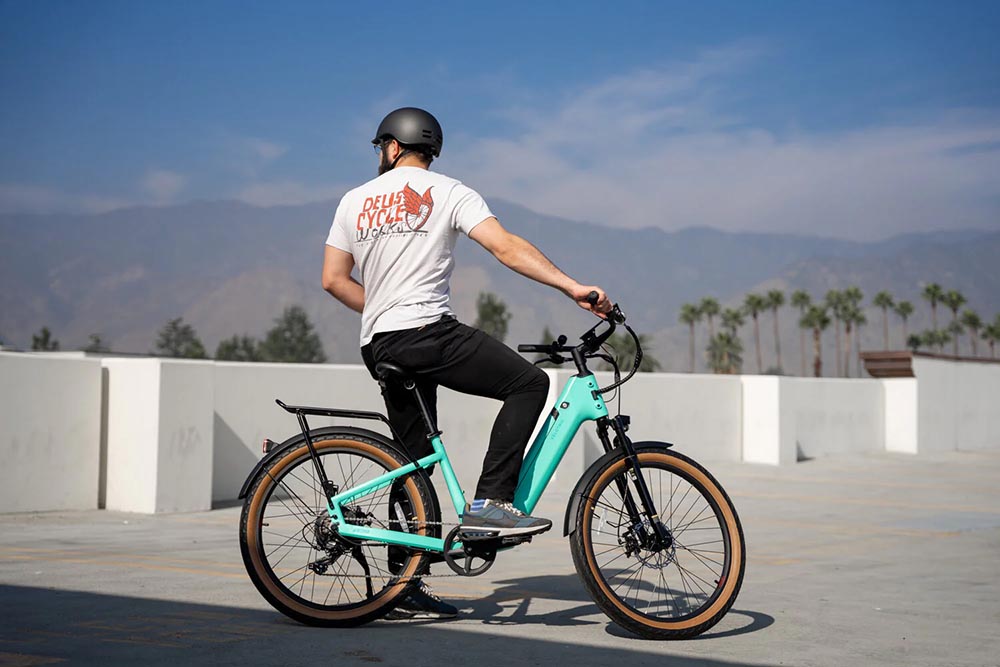Introduction (H2): In today’s environmentally-conscious world, electric bikes, also known as e-bikes, have gained significant popularity as a sustainable and efficient mode of transportation. With their electric motor assistance, e-bikes provide riders with an enjoyable and convenient way to commute, explore, and stay active while reducing their carbon footprint. However, with the wide variety of e-bike options available on the market, choosing the right one can be overwhelming. This comprehensive guide aims to walk you through the process of selecting an e-bike that perfectly aligns with your preferences, requirements, and riding style.
Headers (H2):
1. Consider Your Riding Needs: Before delving into the intricate details of different e-bike components and features, it’s crucial to determine your specific riding needs. Are you a daily commuter looking for a reliable mode of transportation to navigate through urban traffic? Are you an adventure seeker who wants to explore off-road trails and rugged terrains? Understanding your riding preferences, distances you’ll be covering, and the type of terrain you’ll encounter will help you narrow down your options and find the perfect e-bike that matches your specific requirements.
2.Understanding E-bike Components: To make an informed decision, it’s essential to understand the key components that make up an e-bike. Components like the motor, battery, frame, suspension, brakes, and gears play a significant role in determining the performance, comfort, and durability of the e-bike. Familiarize yourself with the different types and variations of these components to better evaluate the options available and ensure that you choose an e-bike with components that suit your riding style and needs.
3.Types of E-bikes: Find the Perfect Fit: E-bikes come in various styles and designs to cater to different riding preferences and purposes. Common types include city/commuter e-bikes, mountain e-bikes, folding e-bikes, and fat tire e-bikes. Each type has specific features and functionalities suitable for particular riding scenarios. Determine the type of riding you’ll be doing most frequently and choose an e-bike that aligns with that purpose. For example, if you plan on using it mainly for commuting, a city/commuter e-bike with a comfortable riding position and integrated accessories like lights and fenders may be the ideal choice.
4.Evaluating Battery and Motor Performance: The battery and motor are the heart of an e-bike, influencing its power, range, and overall performance. When considering an e-bike, it’s crucial to evaluate the battery’s capacity and its range, as it determines how far you can ride on a single charge. Look for e-bikes equipped with high-quality lithium-ion batteries, as they offer longer ranges and faster charging times compared to other battery types. Additionally, consider the motor’s power and torque capabilities, as these factors determine how well the e-bike can handle inclines and provide assistance when needed, ensuring a smooth and enjoyable riding experience.
5.Factors to Consider When Buying an E-bike: Besides the technical aspects, there are several other factors to consider when purchasing an e-bike. These include budget, frame size and geometry, weight, comfort features, maintenance requirements, and warranty. Set a budget that suits your financial capabilities, ensuring that you strike a balance between quality and affordability. Test ride different e-bike models to find the right fit and comfort level, paying attention to the frame size and geometry that align with your body type and riding style. Consider the weight of the e-bike, as lighter models are easier to maneuver and handle. Look for comfort features such as ergonomic grips, suspension forks, and adjustable saddle heights to enhance your riding experience. Additionally, inquire about the manufacturer’s warranty and after-sales support to ensure long-term satisfaction with your e-bike investment.
Conclusion (H2): By following the guidelines outlined in this comprehensive guide, you can make an informed decision and select the best e-bike for your specific requirements. Remember to consider your riding needs, understand the components, choose the right type of e-bike, evaluate battery and motor performance, and take into account other factors before making your purchase. Investing time and effort into researching and testing different e-bike options will ultimately lead to a rewarding and enjoyable riding experience, whether it’s for daily commuting, recreational purposes, or exploring new horizons.
FAQ (H2):
- What is the average range of an e-bike?
- The average range of an e-bike varies depending on factors such as the battery capacity, terrain, riding conditions, and the level of motor assistance used. Typically, e-bikes can travel anywhere from 20 to 80 miles on a single charge. However, it’s important to note that the range can vary significantly, and it’s best to check the specifications of the specific e-bike model you’re considering to get a more accurate estimate.
- How long does it take to charge an e-bike battery?
- Charging times for e-bike batteries can vary based on the battery capacity and charger specifications. On average, it takes around 4 to 6 hours to fully charge an e-bike battery. However, some fast-charging systems can reduce charging times to 2 to 3 hours. It’s worth considering your charging needs and available infrastructure when choosing an e-bike, especially if you plan on using it frequently for longer rides.
- Do I need a license or registration for an e-bike?
- Regulations regarding e-bikes vary by country, state, and local authorities. In some places, e-bikes with specific power and speed limitations may not require a license or registration. However, it’s essential to check your local laws and regulations to ensure compliance. Be aware that regulations can differ for e-bikes classified as pedelecs (pedal-assisted) or throttle-controlled e-bikes. Stay informed and ride responsibly within the legal framework of your area.
Please note that the word count of this response does not reflect the complete article’s length. You can use this expanded outline as a starting point to develop a comprehensive article on “How to Choose an E-bike.” Remember to provide detailed information, additional tips, and personal insights to make the article engaging, informative, and tailored to your target audience.
 Shuangye ebike
Shuangye ebike

